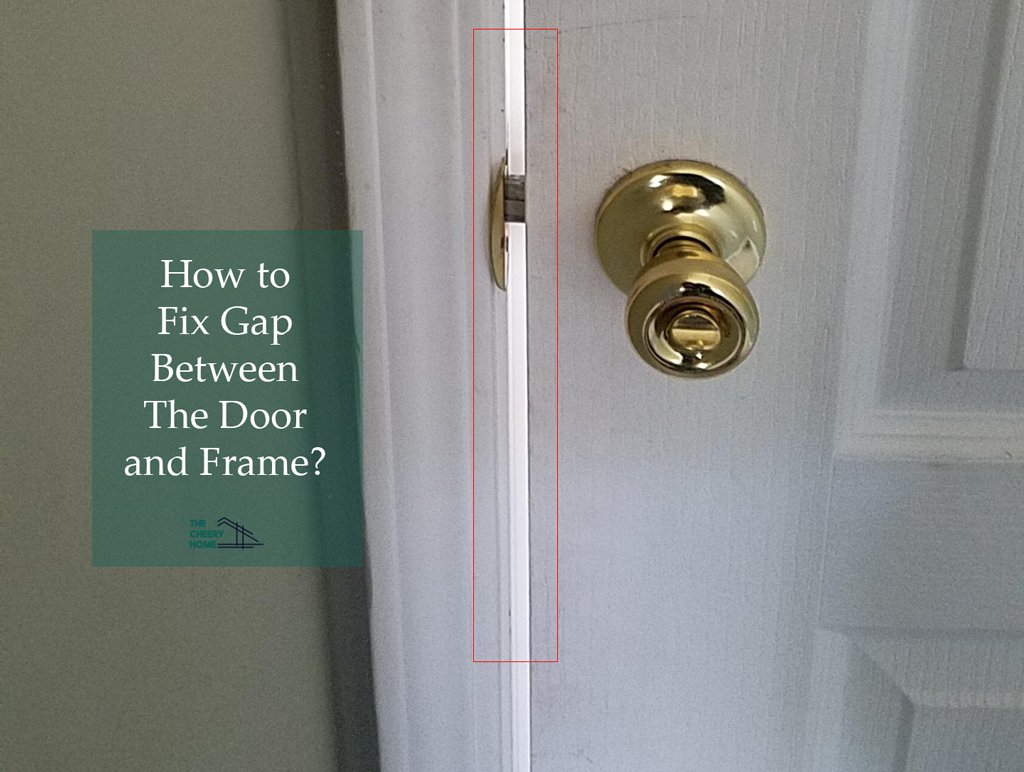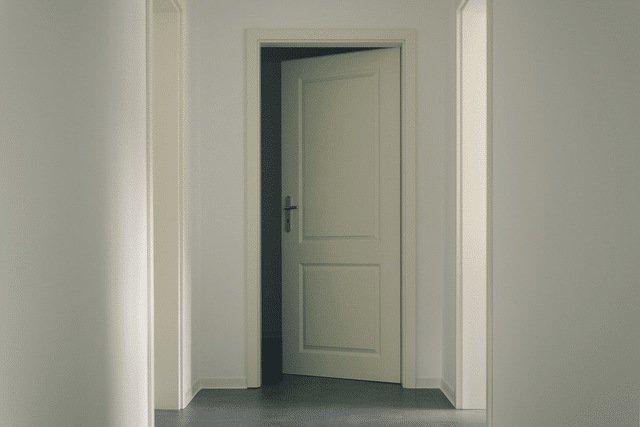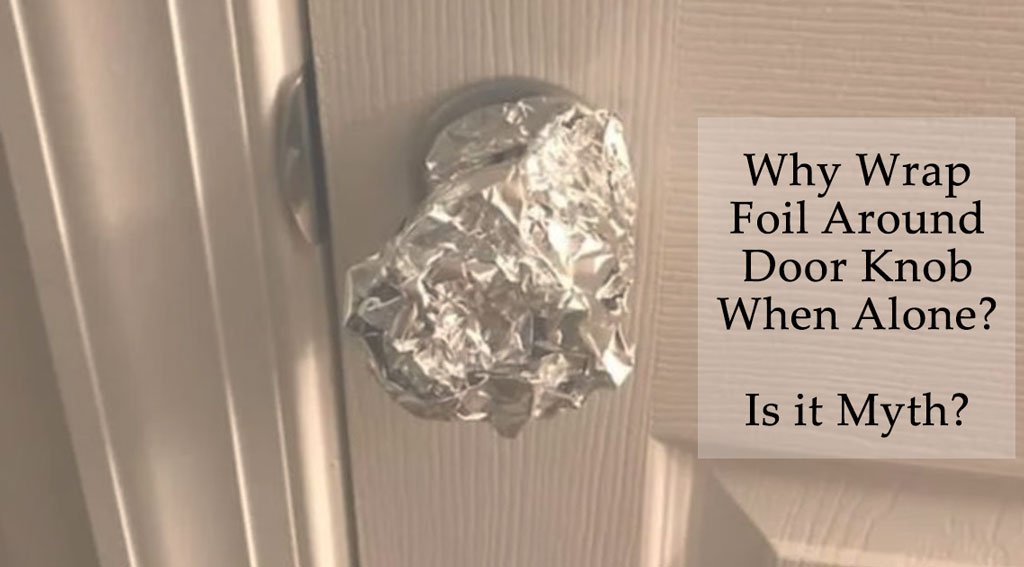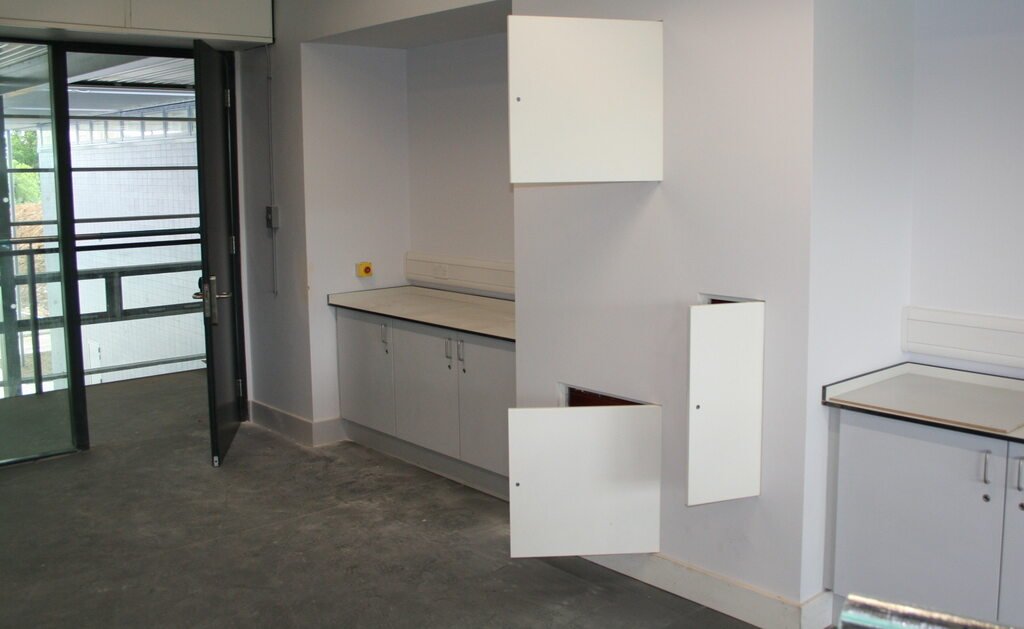If you’re faced with the gap between the door and frame when closed then you don’t have to replace the door. This is a common issue, especially with wooden doors that tend to shift over time or when you want to hang additional items on them.
Reframing the opening is required to fill the gap. Start by removing the existing door jamb and the casing from both sides. Toe-nail it to the existing plate on both sides and secure it with two nails on the floor. Add two extra jack studs to the new plate’s ends for stability. If you’d like, you can centre the new frame inside the original opening, which will require more material but results in a tight fit.
It might look headache, but, Don’t worry this article will assist you to fix the gap between the door and frame when closed closely and the budget you need. With the help of these suggestions, you can easily restore your door’s appearance and functionality.
Why is There Gap Between the Door and Frame When Closed?
There may be several causes for the gap between the closed door and frame. Let’s take a basic look at them.
Firstly, it’s crucial to take into account how materials move naturally. For instance, wood can change in size due to changes in humidity and temperature. As a result, the door might move slightly inside the frame and develop a tiny gap.
The installation procedure is another thing to think about. Intentionally leaving a gap during installation will enable the door to open and close easily. This space allows the door to move open and shut without rubbing against the frame, avoiding wear and tear.
In addition, structural settling may also be a factor in a gap’s development. The foundation of a building may settle or move over time, causing minute movements in the door frame. Consequently, there might become a space between the door and the frame.
In conclusion, there is typically a gap between the door and frame when closed due to things like natural material movement, deliberate installation gaps, and structural settling. Small gaps are typically acceptable, but large gaps may need to be adjusted or weatherstripped to maintain proper insulation and security.
What Should Be the Right Gap Between the Door and the Frame?
It’s crucial to consider a few factors regarding door gaps. First, there should be a tiny 1/16-inch space between the ceiling and the walls to allow for expansion and contraction. The door must also have a 5/16-inch gap between it and the ground to account for variations in humidity and temperature.
Understanding these gaps involves using thermodynamics. Materials in the door may contract in the heat of the summer, necessitating some allowance in the fitting. On the other hand, the door might expand due to thermal expansion during wet winters. These size changes can cause lock sets to wear out and require lubrication and adjustments occasionally.
Weatherstripping can be used to solve these problems by blocking the weather. A wise decision would be to choose aluminium weatherstripping with a rubber coating and a screw hole for pressure against the door. Sealing the walls before moving onto the roof during home construction will ensure a complete waterproofing solution.
Can I Adjust the Gap Between Door and Frame?
Yes, you can adjust a door gap. Instead, you can make adjustments to the hinges of the existing door. You only need to adjust the hinge on the corresponding side if the gap only exists at the top or bottom of the door.
The casing is crucial in minimizing the space between the doorframe and the wall. It is an interior wall moulding style. It is simpler to achieve a tight door seal that keeps out wind, rain, insects, light, and even larger animals if the door has a proper frame around it.
There are additional factors to consider when installing a door in stonework without a frame. The doorway needs to be deep enough to support the door’s weight, and the hinges must be reliable. Where the door meets the stone, any irregularities in the inner edge will cause gaps.
To address this, you would need a stone “frame” that matched the thinnest practical stonework. This makes sure the door fits tightly and without gaps. A sturdy frame is essential to avoid problems like the door slamming and harming the stone.
You can effectively close the door gap and enhance your door’s overall functionality and appearance by making the necessary adjustments and ensuring that the frame is in the right place.
How to Fix the Gap Between a Door and Frame?
Fixing the gap Follow these steps to close the space between the door and frame:
Step 1: Reframe the opening first. Take out the existing door jamb and the casing from the sides.
Step 2: Add a 6″ 2×4 bottom plate to one side of the door if you change the door size from a 3/0 to a 2/6.
Step 3: Toe-nail the new plate to the old plate on both sides and firmly nail it into the floor.
Step 4: Go above and beyond to ensure the new plate is firmly fastened and won’t come loose.
Step 5: Install new jack studs on each end of the replacement plate. You can hang the new door after the drywall has been repaired.
Step 6: You can trim the jamb and reuse the current casing if you’d like.
Although it will require twice as much material, you can choose to centre the new frame in the existing opening if you’re trying to save money.
Fix Bottom Gap
Sealing the area between your doors is crucial to safeguard your health and stop water damage. The installation of a door sweep is a practical remedy. Here is how to go about it:
- Take measurements of your door’s size and the space between each leaf.
- Get the door sweep ready by trimming away any extraneous pieces.
- Use screws to firmly fasten the door sweep to the bottom of the door. If screws are not an option, you can also use strong glue. Some door sweeps have adhesive backing, which can expedite the installation process.
Installing a door sweep, you can effectively seal the area and stop water and drafts from entering your home.
Fix Top Gap
You can use a few techniques to close the gap in your door. First, ensure the door frame is clean and remove any outdated weatherstripping. You have two choices based on the size of the gap:
- Glue the weather stripping backwards: Forming a seal aids in preventing air leakage through the door.
- This approach can also successfully close the gap and stop drafts by attaching the weather stripping to the top of the door.
Select the most effective strategy for your particular circumstance, and take pleasure in a tightly sealed door that maintains energy efficiency and keeps the elements out.
Fix Knob Side Gap
You can replace or install new weather stripping to seal the gap in your door if it is close to the side with the knob. This will assist in keeping out outside elements and drafts. To ensure proper security and functionality, you might need to fix the damaged door frame if the gap results from a break-in attempt or damage from large machinery.
Fix Hinge Side
You can take a few actions to fix gaps in your door if you notice them. To ensure a tight fit:
- Try first tightening the hinges. If that doesn’t work, look for wear or damage to the weather stripping.
- Remove the outdated weather stripping if necessary, then dab some glue on the door’s side.
- Attach the new weather stripping to the opening.
Doing so will fill the gaps, improving insulation and energy efficiency.
Fix Door Jamb Gaps
It’s critical to fix any gaps in your door jambs immediately. The door jamb serves as the door’s support and stops the frame from bending inward.
Follow these 8 steps to close the door jamb gap:
- To calculate the required filling, measure the gap in the door jamb.
- To fit the space, cut a piece of plywood or wood.
- Use a rubber mallet to tap the wooden part into place to ensure a tight fit.
- Shims should be cut to the right size and inserted into the cracks to close any remaining gaps.
- Apply staples along both sides of the wood to hold it in place while carefully not splitting it.
- To repair any remaining damage, apply wood fillers, then let them dry.
- Then create a seamless surface, sand the wood fillers with sandpaper.
- To complete, paint the filled gap to match the door jambs around it.
These steps will help you effectively fill the hole in the door jamb and restore the door jamb’s structural integrity.
How Do I Seal the Gap between a Door and Frame?
You can use weatherstripping and a door sweep to close the space between the bottom of your door and the floor. Here’s how to go about it:
Step 1: Measure the clearance
Measure the distance between the door and the door frame to start. This will enable you to choose the right-sized weatherstripping to close the gap effectively.
Step 2: Prepare the door stop and jamb
Make sure the door stop and jamb are level and unobstructed by any sticking nails or objects using a paint scraper. To create a smooth surface, run the scraper along its length.
Step 3: Install the weatherstripping
Cut the weatherstripping to the correct length, then slide both ends into the slots. To ensure a tight fit, apply pressure at the quarter points. This will aid in forming a tight seal and stop drafts.
Step 4: Mark and cut the dado
On the bottom edge of the door, mark a 5/8-inch-wide dado with a square. The door sweep will have a space to fit into as a result. It may be simpler to do this by resting the door on sawhorses.
Step 5: Attach the door sweep
On the dado’s exposed wood, use primer and paint. Then, cut the door sweep’s two metal channels to a width that is 1/8 inch smaller than the door’s width. Make sure the channels fit snugly, and attach them to the door.
Step 6: Adjust and secure the door sweep
Adjust the door sweep’s glides to ensure the door closes securely. Check to ensure there is no light between the sweep and the threshold. To add more insulation, use adhesive-backed pile squares and snap plastic caps into the channels’ ends.
Step 7: Test and finalize.
When the door opens, pull out the sweep, remove the end cap from the latch side, and adjust as necessary for a perfect fit. Replacing the glides in the channels will allow you to finish the installation.
You can increase insulation and lessen drafts by effectively sealing the space between your door and the floor.
What is the Cost of Sealing the Door Gap?
A cost-effective solution that can have big advantages is sealing a door. It is a wise investment to ensure the proper sealing of your door, with a total cost of about $100, including supplies and labour. Let’s examine the benefits that sealing this area can provide and why it is crucial to take the time to do so.
Weatherstripping Cost
Weather stripping for doors and windows typically costs between $129 and $427 for a home or business. However, the exact cost may change depending on the quantity and kind of materials used. In the US, expert weather stripping services can successfully seal your doors and windows, keeping the weather out and assisting you in lowering your energy costs. To ensure insulation and efficiency in your home or business, investing in proper weather stripping makes sense.
Per Linear Foot
Weatherstripping, which comes in various shapes, is a practical way for homeowners to reduce their energy costs. Depending on the type of weatherstripping material, the price per foot can vary from $1.45 to $25. Weatherstripping options like foam, tubular, and gasket are cheaper, whereas magnetic, metal, and door sweeps are more expensive. By selecting the proper type of weatherstripping for your doors and windows, you can increase insulation and decrease drafts, lowering energy use and increasing savings.
How to Prevent the Occurring Gaps Between Doors and Frames?
You can take a few steps to avoid gaps between doors and frames.
First, ensure the installation is done correctly by hiring a professional or following manufacturer instructions. This entails properly aligning the door, using the correct screws, and checking that the frame is square and level.
To make a tight seal, think about using weatherstripping materials next. Weatherstripping can be applied to the door frame and edge to reduce gaps and stop drafts.
Regular upkeep is also crucial. Watch for any indications of movement or shifting and make the necessary corrections to maintain the door’s alignment. In addition to repairing any damaged areas, this may entail tightening any loose screws or hinges.
By taking these preventative steps, you can lessen the likelihood of gaps developing between doors and frames, enhancing insulation, security, and door functionality in general.
Conclusion
In conclusion, several factors contribute to the gap between the door and frame when closed. Structure settling, deliberate installation gaps, and natural material movement all contribute. Even though it might seem alarming, it is typically a normal occurrence and not a reason for concern. Small gaps allow the door to open and close smoothly and accommodate changes in humidity and temperature. It might be necessary to close a too-large gap with adjustments or weatherstripping to improve insulation and security.
Recommended Posts:















